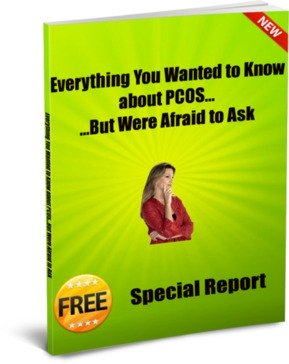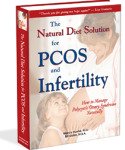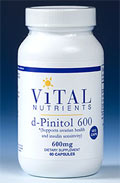PCOS Review Newsletter #13
2) Almonds vs. Complex Carbohydrates for Weight Loss
3) New Technique Raises Pregnancy Odds without Multiple Births
1) Pesticides and PCOS
Data released in January by the Centers for Disease Control shows alarming levels of pesticide contamination in North America, according to U.S. environmental groups. A study by the Pesticide Action Network North America shows the average American has 13 pesticides in his or her body, some at levels well above health thresholds set by U.S. Environmental Protection Agency.
CDC researchers tested the blood and urine of more than 9,000 people for levels of 23 pesticides, and found that 100% of the subjects carried detectable levels of contamination. Levels for two products, chlorpyrifos and methyl parathios, exceeded the safety thresholds dramatically.
Why should you care?
An increasing body of evidence suggests that man-made chemicals released into the environment affect the function of endocrine glands or are hormone mimics. For example, environmental contaminant residues have been found in ovarian follicular fluid. Although there is no conclusive "proof" that these chemicals adversely affect your follicular function, common sense suggests they are certainly not conducive to ovarian health and could impair your ability to get pregnant.
Another example is chemical-based estrogen mimics found in the environment, which are called "xenoestrogens". When xenoestrogens get into your body, they compete for hormone binding sites and thus prevent your native hormones from properly doing their job. It's like metabolic "musical chairs" where your own hormones can't find a place to sit because the chemical hormone mimics are occupying the chairs. Xenoestrogens can disrupt the balance between androgens (testosterone) and estrogen, which contributes to reproductive problems.
Environmental chemical pollution may contribute to infertility, endometriosis, polycystic ovary syndrome, spontaneous abortion, preterm labor, intrauterine growth restriction, and pregnancy-induced hypertension. Therefore it is important that you minimize your exposure to environmental pollution. However, there is no way you can completely escape, since tens of thousands of chemicals are everywhere in your air, water and food.
Is there anything you can do? Switch to organic produce and organic meats. Purify your drinking water. If you live in an area where there is a lot of air pollution, consider an air filter for your home. There are quite a few good books that tell you how to clean up the environment inside and around your home. Please purchase one of these books and get started on cleaning up your personal environment.
Although PCOS is thought to be mostly genetic in origin, your genes are strongly influenced by your environment. If you clean up your environment and reduce your exposure to chemicals, toxic metals and other contaminants, you will help your genes do the right thing.
Sources:
Foster, WG, Do environmental contaminants adversely affect human
reproductive physiology?, J Obstet Gynaecol Can, 2003,
25(1):33-44
Harrison, PT et al, Reproductive health in humans and wildlife:
are adverse trends associated with environmental chemical
exposure?, Sci Total Environ, 1997, 205(2-3):97-106
Dechaud, H et al, Xenoestrogen interaction with human sex
hormone-binding globulin (hSHBG), Steroids, 1999, 64(5):328-34
http://www.cdc.gov/niosh/topics/pesticides
http://e.hormone.tulane.edu/ehormone.html
2) Almonds vs. Complex Carbohydrates for Weight Loss
If you avoid nuts and seeds in the belief that that they will make you fat, this study may interest you.
A recent study examined 32 individuals who consumed a low-calorie diet with 84 grams per day of almonds, resulting in a diet that was 39% fat and 32% carbohydrate, compared with 33 people who consumed a low-calorie diet consisting of 18% fat and 53% complex carbohydrate. The two diets were equivalent calories and protein.
The diet supplemented with almonds was associated with greater reductions in weight/body mass index, waist circumference, fat mass, total body water and systolic blood pressure. There was a 62% greater reduction in weight/body mass index, 50% greater reduction in waist circumference, and a 56% greater reduction in fat mass seen in the almond low-calorie diet compared with the complex carbohydrate low-calorie diet.
What's interesting in this small study is that the amount of protein was the same; only the relative proportion of complex carbohydrate was reduced and replaced with fat. In moderation, raw nuts and seeds are excellent sources of nutrition and provide helpful essential fatty acids (EFAs) -- and they may help you to control your weight, provided your total calorie intake is low.
This is not to say that complex carbohydrates are bad. However, you can be selective about which carbohydrates you eat. For more information on complex carbohydrates, visit our web page about the Glycemic Index.
Source: Wein, MA et al, Almonds vs. complex carbohydrates in a weight reduction program,” Int J Obes, 2003, 27:1365-1372.
3) New Technique Raises Pregnancy Odds without Multiple Births
Combining sperm and egg in the lab and then transferring the resulting embryo into the mother is a common treatment for infertility. New research indicates that implanting a slightly older embryo can increase the chances of pregnancy, which in turn can lower the risk of multiple births.
Transferring newly formed embryos produces notoriously low pregnancy rates. To address this problem, a doctor will often transfer more than one embryo into the womb. Although this practice increases the chances of pregnancy, it also raises the risk of carrying twins.
With recently developed laboratory techniques, it is now possible to grow embryos to a more advanced stage, when they reach the stage known as "blastocysts." Several reports have shown that embryos are more likely to implant and grow in the womb if they are transferred at the blastocyst stage rather than at the newly formed stage.
The higher implantation rates achieved with blastocyst-stage embryos have allowed doctors to decrease the total number of embryos transferred. When just one blastocyst is transferred, the risk of twins is eliminated.
In the current study, the researchers assessed the pregnancy outcomes of 48 women who had one or two blastocysts transferred. The implantation and pregnancy rates in the single-blastocyst group were both 61%. Although a slightly higher pregnancy rate of 76% was seen in the double-blastocyst group, nearly half of the pregnancies involved twins, a problem not seen in the single blastocyst group.
The findings suggest that high pregnancy rates are attainable with single blastocyst transfer. However, further studies are needed to determine which women would benefit most from this new procedure.
Source: Gardner, DK et al, Single blastocyst transfer: a prospective randomized trial, Fertil Steril, 2004, 81(3):551-5
PCOS Health Review
This free newsletter gives you original and immediately usable information to help you deal with PCOS.
Get the latest research, tips for improving your health, answers to questions, success stories, and more!
Your e-mail address is totally secure. We will never misuse your information.
Enter Your Email Above to Subscribe Today
and Get Your Questions Answered in this Free Special Report!





